Endeavor Research Private Ltd successfully hosted the Webinar on Nanotechnology during October 21-22, 2020. The webinar was successful in gathering 45 eminent speakers from various reputed organizations and their paramount talks enlightened the gathering.
The pragmatic meet organized by Endeavor Research Private Ltd received generous response from Industrialists, Academia, Talented Researchers and Young Student Community. Industrialists, Researchers and Students who attended from different parts of the world made the webinar one of the most successful events from the Endeavor.
The scientific program paves a way to gather visionaries through the research talks and presentations and put forward many thought provoking strategies.
Scientific sessions covered in the webinar i.e. Nanomaterials | Nanomedicine and Nano Drug Delivery Systems | Nanocomposites and Nanofluids | Molecular Nanotechnology | Nanotechnology in Medical Diagnosis | Nano-optics, Nanophotonics and Nanoplasmonics | Nanomaterials for Energy and Environmental Applications | Nanomaterials Characterizations and Devices | Nanodevices, Nanoelectronics and Nanosensors| Advanced Nanomaterials- production, synthesis and processing | Organic and Inorganic Nanomaterials | Nanofabrication, Nanoprocessing & Nanomanufacturing | Biomaterials & Nanobiotechnology | Nuclear Nanotechnology | Graphene and Applications of 2D Materials | Nano Materials Synthesis, 2D & 3D Characterization and Applications.
The webinar was marked with the presence of renowned Speakers, Young Researchers, Students and Business Delegates driving the two day event into the path of success with thought provoking keynote and oral presentations.
Keynote Speaker

Keynote Speaker

J. Ruben Morones-Ramirez
Full Professor, Lead Scientist, NanoBiotechnologyResearch Group, Mexico
There is a growing need to enhance our antibacterial arsenal given the rising incidence of antibiotic resistance, the emergence of novel virulent pathogens, and the almost 40-year innovation gap between introductions of new molecular classes of antibiotics. In the face of newly infectious organisms and the global crisis in antibiotic resistance, there is a need to invigorate the basic science and technology of antimicrobial development. This work, describes different engineering approaches to resolve some of the challenges in antibiotic development. The first approach involves exploring potentiation of current antibiotics using novel and naturally existing therapeutic adjuvants (such as silver and supplementary metallic micronutrients) based on a better understanding of the mechanisms of infectious disease, a comprehension of microbe-therapeutic biochemical interactions as well as the microbial genetic responses to therapeutics. The second approach includes some of the work in progress to develop novel drug delivery systems, using the interface of Nanotechnology and Synthetic Biology, to design intelligent and endogenous antimicrobial therapeutics. The final approach addresses the commitment to discover novel antimicrobial molecules and therapies. This work, in the third approach, describes an innovative mechanism to discover antimicrobial molecules through the identification of fruitful competitive biochemical interactions between a set of microorganisms in synthetic and natural ecologies.
Keynote Speaker
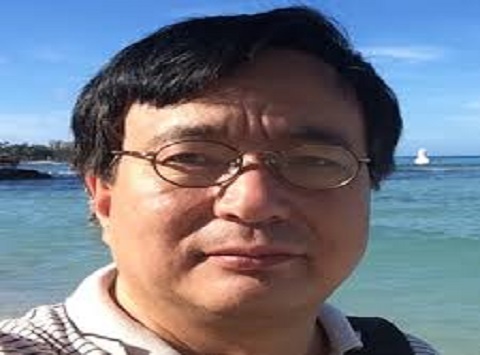
You Qiang
Department of Physics, University of Idaho, Moscow, USA
Dr. Qiang is a full professor of physics and professor in the Nuclear Engineering Program at the University of Idaho, US. He is the chairman of Idaho Academy of Science and Engineering. He received his MS degree 1985 at the Harbin Institute of Technology and Ph.D. in1997 at the University of Freiburg, Germany. Dr. Qiang’s research focuses on magnetism and magnetic nanomaterials. He has studied magnetic nanoparticles and nanocomposites for more than 30 years, including synthesis of monodispersive nanoclusters and nanocluster-assembled composites; characterization of magnetic and optical properties as well as transport properties by conductivity, optics, susceptibility and theoretical investigation. He applies magnetic nanomaterials in energy, environmental and biomedical science and nanotechnology. Presently Dr. Qiang’s research interests are a) Nano-Nuclear Technology and magnetic separation nanotechnology for used nuclear fuel recycling; b) High temperature ferromagnetism and giant magnetoresistance of semiconductor oxide nanomaterials for spintronics; and c) Iron-based magnetic nanoparticles for cancer treatment and environmental remediation.
Nuclear energy is one of the best sources of clean energy. One major concern is the disposal of the used nuclear fuel, any process for its disposal needs to have a minimal impact on the environment. Globally plutonium and uranium recovery for MOX fuel is performed using the PUREX process. However, this comes with certain disadvantages such as the requirement for large quantities of separation reagents and the generation of significant volumes of secondary waste that might increase the threat of proliferation. With long term storage of used nuclear fuel, there is potential for contaminating ground water due to the performance of interim and long-term geologic storage containers. Novel magnetic nanosorbents-surface functionalized magnetic nanoparticles conjugated with specific metal chelators-has been developed for separation of metal ions from aqueous systems, which offers a simple, fast, effective, and environmentally benign technique in spent nuclear separation. The unique properties of magnetic nanoparticles (MNPs), such as their extremely small size and high surface area to volume ratio, provide better kinetics for the adsorption of metal ions from aqueous solutions. The high magnetic susceptibility of MNPs aids in an efficient separation of particles from waste solution. In this work, we demonstrated the separation of minor actinides using complex conjugates of MNPs with DTPA chelator. The uptake behavior of Am(III), Pu(IV), U(VI), and Np(V) from 0.1M NaNO3 solution was determined. The sorption results show the strong affinity of DTPA towards Am(III) and Pu(IV) by extracting 97% and 80% of actinides, respectively. Advanced magnetic separation nanotechnology proves an effective method for used nuclear fuel recycling as it is a simple, versatile, compact, and cost-efficient process that minimizes secondary waste and improves storage performance.
Keynote Speaker

Nallani Satyanaryana
UGC-BSR-Faculty Fellow Nanoscience and Technology Research Laboratory, Pondicherry University Pondicherry, India
Dr. N. Satyanarayana received his B.Sc. in three majors (Maths, Physics and Chemistry) and M.Sc. in Physics with Materials science specialization from Osmania University, Hyderabad, India. Dr. N. Satyanarayana obtained Ph.D from Indian Institute of Technology, Madras, India. Ph.D. His Ph.D. Thesis work on EPR and Electronic Absorption studies of Transition Metal Ions in cadmium Salts. Dr. N. Satyanarayana has joined as a Lecturer on 28-01-1988 and promoted as Associate professor in 1994 and Full Professor in 2002 in the department of Physics, Pondicherry University, India. Right from the date of joining job, I had been involved in developing M.Sc., M.Phil and Ph.D. courses curriculum, setting up the M.Sc. as well as research laboratories and also writing minor and major research project proposals for getting money to develop research facilities. Apart from teaching and research duties, I had also contributed so much in academic administration duties like Head, Department of Physics, Pondicherry University (May 2004 to June 2006), Dean, School of Physical, Chemical and Applied Sciences, Pondicherry University, (November 2012 to March 2016). By the invitation of our University, I also worked as a Founder Head, for the Centre for Nanoscience and Technology of our Pondicherry University (December 2009 to July 2015).
Dr. N. Satyanarayana has generated 22- research projects, guided 19 Ph.D., M Phil: 23 and M.Sc.: 58 students of Physics, Chemistry, Materials Science, ECE, Mechanical, (Also, helped Ph.D. students of Biotechnology, Biochemistry, PG projects of Dental and Medical students), etc.and published 127- research articles in international Journals in various fields of research. I have established good Nanoscience and technology research laboratory (four labs) using the funds received from the granted research projects and developed many synthesis methods for the preparation of bulk and nanomaterials in different Phases (Amorphous/ glasses, single/polycrystalline &Composties/ nanocposites polymers), different shapes (nanospheres, nanosheetsnanofibres, nanowires, nanorods, Nano petals with micro – flowers, nano coatings, etc.) in different dimensions (1D, 2D & 3D) for different applications, like energy storage and energy conversion devices (Lithium, sodium & silver, button cell type & thin film micro Batteries, fuel cells, DSSCs, Sensor and Supercapacitors). Also, developed nanomaterials for Medical, Dental, Engineering, agriculture and food packaging, etc., applications.
Dr. N. Satyanarayana has worked as Post doctoral and visiting professor fellowships from Netherlands, USA, and Canada and Visited USA, Canada, Italy, Netherlands, Singapore, Malaysia countries. He has Life Member in SIX Academic Societies, Referee to review the research papers for 54 - International & 2- National Journals. Also, Referee to review research project proposals from DST, CSIR, DRDO and DBT, Govt. of India.
The exponential growth in portable electronic devices such as cellular phones, laptop computers, etc., has motivated enormous interest in developing safe, compact, light weight and high energy density batteries with better cycle life. The lithium ion batteries are more suitable to meet the above mentioned applications, since they provide high energy density compared to other available rechargeable batteries. Hence, a wide range of materials, as anodes, cathodes and electrolytes, have been developed and investigated for the improved lithium battery technology. Recently, nanostructured materials are found to be better candidates than their respective crystalline counterparts. Synthesis processes play major role in the development of nanostructured materials with desired physiochemical properties. Wet chemical routes such as Sol - gel, combustion, polyol, hydrothermal, etc., are used for this purpose.
First, it will be reviewed briefly about various types of energy sources as well as renewable energy sources with special emphasis on batteries. Also, it will be reviewed briefly various types of batteries, need for portable energy devices with special emphasis on lithium batteries and its technology, issues and challenges facing rechargeable lithium batteries, i.e., materials, as anodes, cathodes and electrolytes, used in lithium battery technology, including the influence of use of nanostructured materials and their surface modifications. It will also be reviewed briefly about various synthesis processes used in the development of nanostructured materials. Finally, it gives the information about the investigation of Sol-Gel and combustion processes for the synthesis and surface modification of different types of nanostructured materials, as anodes, cathodes and electrolytes, useful in lithium battery technology. Also, it gives the information how the XRD, FTIR, TG/DTA techniques help to monitor the complete synthesis process for the preparation as well as characterization of the nanostructured materials. Finally, it also gives the information about the fabrication and characterization of lithium batteries using the synthesized nanostructured materials.
Keynote Speaker

Wei Deng
The Graduate School of Biomedical Engineering, University of New South Wales, Kensington, NSW, Australia
Dr. Deng obtained her PhD in Chemistry with nanotechnology background from Macquarie University. Her current research was mainly focused on nanomaterial-based drug/gene delivery systems, including polymers and liposomes. These nanomaterials were rationally designed to release the contents upon low dose X-ray radiation, making it a promising tool for cancer treatment. She has published 40 papers in peer reviewed journals including Nature Communications, Advanced Materials and ACS Central Science.
In this work we brought together two existing clinical techniques used in cancer treatment - X-ray radiation and photodynamic therapy (PDT), whose combination termed X-PDT uniquely allows PDT to be therapeutically effective in deep tissue. To this end, we developed mitochondrially targeted biodegradable polymerpoly(lactic-co-glycolic acid) nanocarriers incorporating a photosensitiser verteporfin, ultrasmall (2-5 nm) gold nanoparticles as radiation enhancers and triphenylphosphonium acting as the mitochondrial targeting moiety. The average size of the nanocarriers was about 160 nm. Upon X-ray radiation our nanocarriers generated cytotoxic amounts of singlet oxygen within the mitochondria, triggering the loss of membrane potential and mitochondria-related apoptosis of cancer cells. Our X-PDT strategy effectively controlled tumour growth with only a fraction of radiotherapy dose (4 Gy) and improved the survival rate of a mouse model bearing colorectal cancer cells. In vivo data indicate that our X-PDT treatment is cytoreductive, anti-proliferative, and profibrotic. The nanocarriers induce radiosensitization effectively, which makes it possible to amplify the effects of radiation. A radiation dose of 4 Gy combined with our nanocarriers allows equivalent control of tumour growth as 12 Gy of radiation, but with greatly reduced radiation side effects (significant weight loss and resultant death).
Scientific Session Speaker
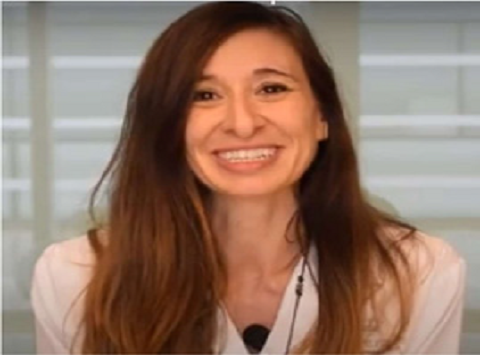
I. Conejos-Sánchez
Polymer Therapeutics Laboratory, Spain
Dr . Conejos-Sánchez obtained her chemistry degree at the University of Valencia (Spain) and her phD n polymer chemistry at the Polymer Therapeutics (PT) lab in the Centro de Investigación Príncipe Felipe (CIPF) (Spain). Her thesis focused on the development and validation of novel polyglutamates-based carriers to overcome the blood-brain barrier and the design of novel polymer conjugates for the treatment of rare neurological disease. She has held 3 post-doctoral positions within different excellence groups which have broaden her knowledge on nanomaterials: the Biomaterials Group in IK4-CIDETEC (Spain) of Dr. I. Loinaz, Prof. MJ Alonso’s group at Univ. Santiago de Compostela (Spain) and the Dpt. Clinical Neurosciences at Univ. of Cambridge (UK). Currently she is a Senior Researcher at PT lab in CIPF. Her
multidisciplinary profile covers from the rational chemistry design of diverse nanomaterials considering a specific disease and biological barrier, to the synthesis and physicochemical characterization of nanobiopharmaceuticals, to finally evaluate their biological fate.
Polypeptides display a major role on a number of different relevant areas such as nanomedicine [1]. These amino acid-based carriers benefit from their biodegradability and biocompatibility, and represent excellent candidates as drug delivery systems and/or imaging agents. Under the Polymer Therapeutics umbrella, we developed polypeptide-based therapies to address unmet clinical needs, starting from rational designs, exhaustive physico-chemical characterization and biological validation in relevant preclinical models. In our group, we have overcome the main classical limitations for the synthesis of defined polypeptides using precise controlled reactions yielding well-defined polypeptidic architectures by NCA polymerization [2]. In addition, post-polymerization techniques allow us the introduction of multiple functionalities in the polypeptidic backbone rendering a set of orthogonal reactive attachment sides [3]. Using these techniques and following a bottom-up strategy we have been able to obtain star-based polypeptide architectures with the capacity to self-assemble ending up in supramolecular nanostructures with unique properties [4]. Structural factors have been designed as key players in the final biological performance [5]. Thus, the study of structure-activity relationship is implemented in our routine to develop hierarchical approaches into the polypeptide conjugates design. These strategies together with an adequate polymer-drug linker design enabled us to obtain efficient therapies with demonstrated efficacy and lack of toxicity. Our results envisage these systems as promising nanocarriers for therapeutic or diagnostic applications. Examples on their application as anti-cancer treatments and regenerative therapies will be addressed
Scientific Session Speaker
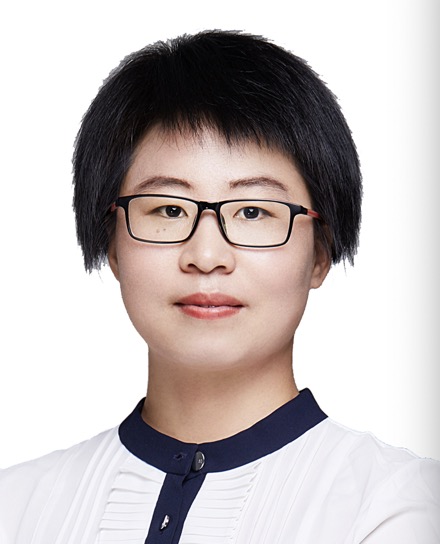
Scientific Session Speaker
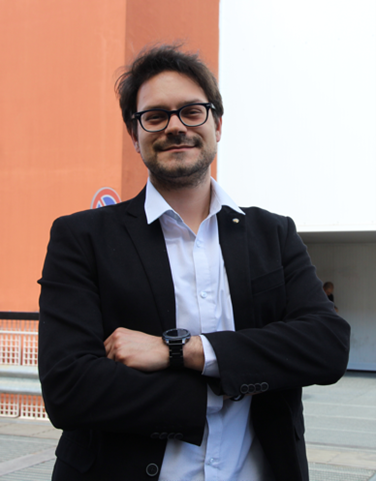
Giuseppe Emanuele Lio
University of Calabria and CNR-Nanotec, Italy
Dr. Giuseppe Emanuele Lio received his B.Sc. degree in Science of Innovative Materials and Nanotechnologies in September 2015, and his M.Sc. degree in in Science and Engineering of Innovative and Functional Materials with full marks September 2017 both at the University of Calabria (Italy). From April to July 2017 he spent a period of stage/internship at the University of Technology of Troyes, France. He is concluding his Ph.D. at University of Calabria and Italy National Research Council- Nanotechnology Institute (CNR-Nanotec). He published several papers focused on photopolymerization, nano-scale fabrication, numerical simulations, and experimental measurements in optics, photonics and plasmonics. He developed experimental expertises in ellipsometry, micro and nano-fabrication, spectroscopy analysis, and spectrofluorometry. He was invited as Research Scholar in the NanoPlasmLab at the Case Western Reserve University in Cleveland, Ohio, USA. There, he improved his knowledge in gain-materials modeling, and deep machine learning used to design metasurfaces with nano-scale features.
In the last years, the interest of researchers is mainly focused on an effective way to improve the resolution of one- and two-photon polymerization with application in different frameworks like photonic circuits, polymeric ridges doped with quantum emitters [1], plasmonic-photonic transistors [2], just to name a few. The continuous research on metamaterials allows designing and predicting the optical behavior of a plethora of systems like hyperbolic metamaterials and optical nano-cavities enabling very exciting features including extraordinary transmittance, zero reflectance and giant dephasing [3,4]. By exploiting a metal/insulator/metal/insulator geometry, an upgrade of the standard two-photon direct laser writing (TP-DLW) process to hyper resolution was enabled [5]. The improved technique will play a relevant role in nanotechnology. It can pave the way to fabricate new generation of 2D/3D nanometric devices with intriguing applications, such as nanoparticles in a specific disposition [6], or on flexible substrate producing plasmonic resonance shifts [7] and thermoplasmonic effects [8,9]. The achieved voxel reduction of about 89% in height and the 50% in width enable the fabrication of labels exploiting physical unclonable functions (PUFs) [5] or the realization of apochromatic broadband metalenses with extended focal length and a depth of focus with a numerical aperture of 0.87 [10]. The improved resolution of TP-DLW process is extremely important for industrial applications in several fields such as anti-counterfeiting and flat optics.
Scientific Session Speaker
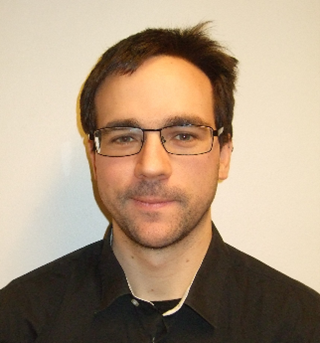
Jonathan Quinson
Denmark
Dr. Jonathan Quinson obtained his master of science (MSc) from ESPCI ParisTech, Paris, France and his master of research (MRes) from Imperial College London, UK before doing a PhD at the University of Oxford, UK. After working on electrochemistry and carbon nanomaterials he moved to the synthesis of precious metal nanoparticles for application in catalysis and energy. He was granted 2 Marie Skłodowska-Curie Fellowships and his research interest are nanomaterials synthesis and formation, catalysis, electrocatalysis, energy and sustainability. He holds one patent application and authored several publications on surfactant-free synthesis of precious metal colloidal nanoparticles. He also contributed to several works on their applications for energy
Colloidal syntheses are widely used across the scientific community to prepare a variety of materials.1 If various shapes, structures and compositions can be obtained, surfactants are added in almost every cases to ensure the stability of the colloids.2 These surfactants can bring positive features to the materials but are in most cases detrimental for further applications, e.g. in catalysis where clean surfaces are desired.3 Rather than developing approaches to remove the surfactants, we focus on developing surfactant-free colloidal syntheses.4
This talk will show different examples of surfactant-free syntheses we developed. Achievements towards simpler and more sustainable synthesis design as well better understating on the stabilization of surfactant-free colloidal precious metal nanoparticles will be presented.5, 6 The talk will highlight how surfactant-free syntheses can lead to optimized catalyst and their improved studies.4, 7 Finally, further area of possible use of the surfactant-free nanoparticles will be suggested especially in light of their surprising stability in water and buffers
Scientific Session Speaker

Tokeer Ahmad
Nanochemistry Laboratory, Department of Chemistry, Jamia Millia Islamia, India
Prof. Tokeer Ahmad did his masters in chemistry from IIT Roorkee (2000) and Ph.D. from IIT Delhi (2006) in the thrust area of Nanotechnology. Immediately after PhD, he joined Jamia Millia Islamia, New Delhi as an Assistant Professor of Chemistry and became full Professor in 2019. His research interest includes the development of advanced and functional nanostructures for photocatalysis, gas sensing and energy applications. He has supervised 9 PhD’s, 63 post graduate students, currently supervising 7 Ph.D. students and instrumental to receive eight research projects of worth more than 31 million. Dr. Ahmad has published 116 research papers in peer-reviewed journals of international repute and authored a book on Principles of Nanoscience and Nanotechnology to his credit. His current research citation is around 3205 with an h-index of 33 and i10-index of 70. Dr. Ahmad has been the active member of various National and International academic societies such as CRSI India, ISCAS, SMC BARC, ACT Mumbai, ACS, American Nano-society etc. and also serving NPG’s Scientific Reports journal as an editorial board member. He has been active reviewer of 88 different international journals. Dr. Ahmad has delivered 77 Invited talks and presented 120 conference research papers at National and International platforms. He also served Jamia as Coordinator, Swachh Bharat Mission of Govt of India. Dr. Ahmad has received DST-DFG award from Govt. of India (2009), ISCAS Medal (2011) for the significant contribution in Nanotechnology and prestigious Inspired Teacher’s recognition from Hon’ble President of India in 2015. Recently, Dr. Ahmad has received the “Distinguished Scientist Award” for the year 2019 from the Indian Association of Solid State Chemists and Allied Scientists due to his outstanding contribution in the area of chemical sciences and elected as Member of very prestigious National Academy of Sciences India (NASI).
Nanomaterials are among the most challenging areas of current scientific and technological research because of the variety of interesting changes in their properties at nano-dimension. Functional nanomaterials find the possibility for their applications in water splitting processes for hydrogen generation as a renewable source of green energy. Fe3O4 nanocubes were prepared in one pot process for the electrochemical water splitting and supercapacitor applications. Magnetic measurements indicate that the as-synthesized Fe3O4 nanocubes are ferromagnetic at room temperature. The synthesized nanocubes have high specific surface area of 268 m2 g-1, which affects the electro-catalytic activity of the electrode materials. The electro-catalytic performances of the IONPs for the HER and supercapacitors were investigated in alkaline medium at room temperature. Similarly, ultrafine RuO2 nanoparticles have been prepared through a wet chemical method. The catalytic activity of ultrafine RuO2 was examined against the Horseradish peroxidase enzyme (HRP) and applied as sensor for the detection of H2O2 in the solution. Besides that, the stimulating bifunctional electro-catalytic performance of RuO2 nanoparticles was studied under different atmospheric conditions. The studies of Yttrium Ferrite nanoparticles by citrate precursor route reveal the formation of monophasic orthorhombic YFeO3 nanoparticles with fairly uniform distribution of nearly spherical particles, high specific surface area of ~338 m2/g and visible band gap of 2.5 eV. Dye sensitized solar cell of YFeO3 nanoparticles was constructed in combination with TiO2 powder to determine the photo-conversion efficiency, current density and open circuit voltage. Photocatalytic generation of hydrogen by using YFeO3 nanoparticles has also been studied under the visible light irradiations which showed a significant H2 evolution reaction rate up to 131.6 µmol h-1g-1. Delafossite CuCrO2 nanoparticles were found to have 2-4 times higher specific surface area than reported nanoparticles and showed remarkable enhancement in catalytic degradation of methylene blue in aqueous media under the sunlight irradiation. The chemistry of some oxide based multiferroics of general structure AMO3 (A= Y, Gd & Bi and M = Fe, Mn & Cr) nanoparticles will also be discussed.
Keywords: Nanomaterials, Oxides, Photo-catalysis, Electro-catalysis, Water Splitting, Hydrogen energy.
Scientific Session Speaker

Shaokun Chong
Frontiers Science Center for Flexible Electronics, Xi’an Institute of Flexible Electronics and Xi’an Institute of Biomedical Materials & Engineering, Northwestern Polytechnical University, China
Dr. Shaokun Chong obtained his BSc (Materials Science and Engineering) from Hainan University in 2014 and his PhD (Materials Science and Engineering) from Xi’an Jiaotong University in 2019. He was a visiting scholar at Harvard University from Aug. 2018 to Aug. 2019. His PhD research was the study on synthesis, electrochemical performances and potassium-ion storage mechanism of cathode materials for potassium ion batteries. He is currently an associated professor and lectures wearable energy electronic materials and technology at Northwestern Polytechnical University. His area of interest is advanced nano-materials for energy storage and conversion. He has published various papers in peer reviewed journals
The abundant reserve and low price of potassium resources promote K-ions batteries (KIBs) become the promising alternative to Li-ion batteries, while the large ionic radius of K-ions creates a formidable challenge for developing suitable electrodes Here Ni-substituted Prussian blue analogues (PBAs) are investigated comprehensively as cathodes for KIBs. The synthesized K1.90Ni0.5Fe0.5[Fe(CN)6]0.89·0.42H2O (KNFHCF-1/2) takes advantage of the merits of high capacity from electrochemically active Fe-ions, outstanding electrochemical kinetics induced by decreased band gap and K-ions diffusion activation energy as well as admirable structure stability from inert Ni-ions. Therefore, the first capacity of 81.6 mAh·g-1 at 10 mA·g-1, improved rate property (53.4 mAh·g-1 at 500 mA·g-1) and long-term lifespan over 1000 cycles with the lowest fading rate of 0.0177% per cycle at 100 mA·g-1 can be achieved for KNFHCF-1/2. The K-ions intercalation/deintercalation proceeds through a facile solid solution mechanism, allowing 1.5-electrons transfer based on low and high-spins FeⅡ/FeⅢ couples, which is verified by ex situ XRD, XPS and DFT calculations. The K-ion full battery is also demonstrated using graphite anode with high energy density of 282.7 Wh·kg-1. This work may promote more studies on PBAs electrodes and accelerate the development of KIBs
Scientific Session Speaker

Neda Ojaghlou
Virginia Commonwealth University, USA
Dr. Neda Ojaghlou obtained her M.S. (Physics) from Zanjan University and her Ph.D. (Chemistry) from Virginia Commonwealth University. Her Ph.D. research was on the adhesion at Solid/ Liquid Interfaces. She is currently a Postdoc at the Chemistry department, University of Richmond. Her area of interest is in Molecular Dynamics, Quantum Chemistry, Machine learning, and Markov State Modeling.
When in contact with water, graphene interferes with hydrogen bonds among the water molecules, replacing them with weaker dispersion attraction to carbon atoms. Nonetheless, neat graphene is found to be weakly hydrophilic. Its affinity to water is partly explained by the graphene’s conductivity leading to attractive induction forces. Using the constant-potential molecular dynamics algorithm for conducting materials, we manifest considerable charge fluctuations on carbon atoms responding to perpetually rearranging configurations of polar molecules in the hydration layer. A previously unknown feature unveiled by our computational approach is the synergy of the induction effects when water is present on both sides of a graphene sheet. In this new picture, graphene plays an active role in communicating between the opposing hydration layers revealed by the induction-driven reversal of orientational correlations. As a result, graphene is considerably easier to wet from both sides than from one side alone. This is important as the former scenario occurs in many practical applications. The distinction between the two behaviors conforms to experimental findings in water and can be expected with other dipolar and ionic liquids or solutions.
Scientific Session Speaker

Satish Kumar Dubey
Centre for Sensors, Instrumentation and Cyber Physical System Engineering (SeNSE), Indian Institute of Technology Delhi, India
Dr. Satish Kumar Dubey is Assistant Professor at SeNSE, IIT Delhi since November 2016. He received his M. Tech (Applied Optics) and Ph.D. degree from IIT Delhi in 2004 and 2009 respectively. He has worked as Optics Engineer at Coherent Singapore. He has also worked as scientist at Central Scientific Instruments Organization, Chandigarh and Instrument Research and Development Establishment (IRDE) Dehradun, a unit of DRDO. Prior to joining, IIT Delhi, He had worked as Technical Expert at Corporate R&D, Siemens Bangalore for six years where he had handled several R&D projects. His research interests include SERS based spectroscopic instrumentation, optoelectronic sensing and interferometry. He has 15 publications in international peer reviewed journals, 16 conference proceedings and 11 patent filings.
Nanotechnology is an enabling technology in sensing and diagnostics. For the past two decades nanotechnology has made inroads in almost every field of science and engineering. Development/availability of new instruments, allowing the researchers to observe and manipulate the matter at nanoscale, have helped in the progress of Nanotechnology. Various techniques like scanning tunneling microscopy, magnetic force microscopy, and electron microscopy have helped the scientists observe the events at the atomic level. At the same time, economic pressures in the electronics industry have forced the development of new lithographic techniques with continuous reduction in feature size and cost. With the advancement in detection, manipulation and measurement instruments at this scale, further progress is bound to happen in our understanding of the events at nanoscale. This talk will focus on various aspects of nanotechnology in context to plasmonics for Surface enhanced Raman scattering (SERS) based applications.
Plasmonics deals with the propagation, transmission, and reception of optical signals at subwavelength regime by nanoscale objects. Development of nanoscale optics has led to the creation of new plasmonic structures like nanoantenna. A remarkable property of nanoscale optical antenna is surface plasmons (SPs), which can keep the optical energy concentrated on the nanoscale. The limit of conventional optics is broken by SPP oscillations as they allow the compact storage of optical energy at the interfaces of metal and dielectric materials at subwavelength dimensions. It has unveiled myriads of exciting scientific possibilities such as molecular-scale optics and nanoscale optical circuits. The surface plasmon resonance (SPR) in optical
nanoantennas holds potential for sensing and detection of individual biomolecules and nanomaterials.
SERS, considered as a special case of Raman spectroscopy, has emerged as a versatile tool that offers sensitivity along with the structural information of the molecule under investigation and has established itself as a spectroscopic technique for trace detection in various fields including chemistry, material science, biochemistry, and life sciences. With the rapid progress in nano-fabrication scheme, design of SERS substrate has immensely contributed in the development of biological and biomedical sensors, detectors for explosives and narcotics, besides other applications It essentially increases the Raman cross section of a molecule close to a metallic nanostructure (the local enhancement is expected to exceed five to 10 orders of magnitude), which makes SERS an ideal tool for single-molecule detection. A successful design of SERS substrates depends critically on our understanding of the underlying enhancement mechanisms and a predictive theoretical modeling. Besides designing, fabrication of SERS-based optical nanoantenna is also critical. As the name “nanoantenna,” itself suggests, fabrication of such devices cannot be done by conventional means, because the dimensions are in nano-regime. Some of the techniques for nanofabrication and the application of these optical nanoantennas will also be discussed. These nanostructures may find extensive application in various spheres of human activity for e. g. in medicine for diagnostics and the treatment of cancer, photovoltaics and photonics, for improving the efficiency of solar cells, for the enlargement of Raman scattering cross sections, as well as in the specialized probes for near-field microscopy.
Scientific Session Speaker
Vincenzo Caligiuri
University of Calabria - Department of Physics, Italy
Epsilon-Near-Zero (ENZ) dielectric response is an exotic propagation regime lying at the basis of important technological achievements. [1–3] One example of natural ENZ permittivity is the Ferrell-Berreman mode in Ag subwavelength layers, occurring only at 327 nm and exclusively under p-polarized excitation. [4] Here, we outline a way to engineer ENZ resonances in Metal/Insulator/Metal (MIM) nano-cavities in a broad range, for both p- and s-polarized excitation. Spectroscopic Ellipsometry, corroborated by a homogenization of the MIM’s dielectric permittivity, elucidates the low-loss ENZ nature of the MIM’s resonances. The group velocity of the light trapped in the cavity slows down to zero allowing the mode to propagate for several microns in the MIM waveguide. [5,6] The dispersion relation of MIM structures is calculated in a quantum framework, individuating the MIM as the photonic analog of the finite square well for electrons. This new look allows to identify the dielectric permittivity as the optical potential. We found out that MIM’s resonances are suppressed in the spectral range where the ratio n/κ between the real and imaginary part of the refractive index of the metal exceeds a certain threshold, above which non-Hermitian processes are non-negligible. [5] The quantum approach leads to an intuitive interpretation of these modes as the resonant tunneling frequencies of the MIM, lifting from the need of momentum matching techniques. [5] As two noticeable applications, we propose a MIM superabsorber and a MIM resonant tunneling refractive index sensor. [5] We extend the quantum approach to double MIMIM cavities exploring both experimentally and theoretically the hybridization of the ENZ modes as the equivalent of the coupled double quantum well. Its dual resonant response is exploited to enhance the photophysical response of a fluorophore placed on the top of the MIMIM double ENZ cavity whose high and low energy resonances are tuned respectively to the absorbance and emission of the selected fluorophore. [7] In the end, we show how to engineer an ultra-broad ENZ response via multiple cavity systems
Scientific Session Speaker

Tarun Parangi
Department of Chemistry, Sardar Patel University, India
Since last many decades titania (TiO2)-nanoparticle (NP) has been extensively studied owing to its prime characteristics as low cost, high stability, non-toxicity, biologically inertness, redox ability and environmental friendly merits. Nowadays, the photocatalytic activity of TiO2 can be controlled through synthesis of nano-composite material which allows the improvement and tuning the characteristics. The synthetic trend can create and modify mid-band-gap electronic states that alter the charge migration and hence improved photocatalytic activity through easy UV-visible light absorption. The concept is being applied for efficient utilization of TiO2-NPs as modified photocatalyst for environmental remediation.
We have synthesized Ag doped titania-NPs (Ag/TiO2) by varying Ag content (0.75, 1.5, 2.5, 3.5, 5.0 and 7.5 at %) using non-aqueous sol-gel synthesis route followed by calcination at different temperatures. The obtained Ag/TiO2-NPs found to be thermally stable of anatase phase with small and uniform particles size, high surface area and low-energy excitation characteristics. The materials have been explored as a photocatalyst (using UV irradiation) for the plastic degradation as an environmental cleaning application. The plastic degradation was evaluated through measurement of photo-induced weight loss and confirmed by studying their surface morphology (SEM analysis), elemental and thermal analysis. The present study demonstrating influences of silver metal doping effect on photocatalytic activity of titania-NPs.
Scientific Session Speaker

Andrea Ridolfi
Centre for Colloid and Surface Science, Italy
The interaction of nanoparticles (NPs) with living organisms is mediated by biological barriers, such as the cell plasma membrane. Despite the remarkable potential of NPs for biomedical applications, their interactions with biological membranes are still poorly understood. Lipid-based synthetic model membranes represent useful platforms for studying biological interfaces under controlled and simplified conditions. We herein present an investigation on the effects of membrane rigidity and composition on the interaction of citrated gold nanoparticles (AuNPs) with synthetic lipid vesicles. Combining UV-Vis spectroscopy, Atomic Force Microscopy based Force Spectroscopy (AFM-FS) and Small Angle X-Ray Scattering (SAXS), we show that the lower the membrane rigidity, the higher the strength of the interaction between AuNPs and the lipid membranes. Successively, we explore the effect of membrane composition, employing multicomponent Supported Lipid Bilayers (SLBs) as models for mimicking the lateral heterogeneity typical of the cell plasma membrane. Exploiting AFM imaging, we characterize how AuNPs adsorption is influenced by the presence of phase separated lipid domains, i.e. lipid rafts. Rafts’ boundaries are thought to be regions with energetically favorable conditions for the adsorption of NPs; however, a direct proof of this selective adsorption is still missing to date. Our AFM images1 prove this interaction pathway, showing that AuNPs preferentially adsorb along the rafts’ boundaries. The presented results advance the current understanding on lipid-NP interactions and offer new insights for the development of engineered hybrid nanomaterials
Scientific Session Speaker

Carina B. Maliakkal
Researcher, Lund University, Sweden
Dr. Carina B. Maliakkal obtained her MSc (Physics) from the University of Hyderabad, India and her PhD (Physics) from Tata Institute of Fundamental Research. Her PhD research was based on understanding the growth of III-V semiconductor nanowires. During her postdoctoral research she investigated compound nanowire growth using in situ transmission electron microscopy at Lund University. Her interests span across in situ TEM, crystal growth and nanowires.
Semiconductor nanowires are promising candidates for future technology related to optoelectronics, electronics, sensors and qubits. The growth of nanowires using a metal catalyst is understood in terms of the vapor-liquid-solid (VLS) mechanism whereby the reactants supplied in the vapor phase dissolves in the liquid catalyst, supersaturates and eventually precipitates layer-by-layer as a solid nanowire. However, an extensive understanding of the growth dynamics required for engineering materials for future nanotechnology is still incomplete. In situ growth of nanostructures inside a transmission electron microscope (TEM) is a useful tool to understand the growth dynamics.
GaAs nanowires were grown using Au as catalyst in an aberration-corrected environmental TEM connected to an MOCVD system. The composition of the catalyst particles was measured in situ to find there is significant amount of Ga alloyed into the Au seed particle, but there is hardly any As in the catalyst.
The growth of individual layers can be observed in real time and recorded as high-frame-rate videos. Growth dynamics in nanowires have two important parts – the nucleation of each layer at the catalyst-nanowire interface followed by lateral growth of the nucleus to a full bilayer. We define growth time for each bilayer as the ‘layer-completion time’ and the waiting time between successive layers as ‘incubation time’.3 Unlike assumed by most theoretical models, the layer completion is not instantaneous. This can be explained on the basis of the low As concentration. The layer completion and incubation times were investigated with two sets of experiments – an As-precursor series and a Ga-precursor series. We demonstrated independent control of nucleation and layer growth using precursor flow.
Scientific Session Speaker

Congli Sun
State Key Laboratory of Advanced Technology for Materials Synthesis and Processing, International School of Materials Science and Engineering, Wuhan University of Technology, China
Dr. Congli Sun obtained his BSc (Materials Physics) from the Sichuan University and his PhD (Materials Science and Engineering) from the University of Wisconsin Madison. His PhD research was based on the application of high precision electron microscopy and density functional theory calculations on the spintronic devices. He is currently associate professor and lectures advanced electron microscopy at the Wuhan University of Technology. His area of interest is in situ electron microscopy for interface/surface physics and solid-state phase transitions. He has published more than 30 peer-review journals.
The irreversible release of lattice oxygen of layered transition metal oxide cathodes is one of the main degradation mechanisms in lithium ion batteries, including voltage/capacity decay, loss of cation ions, cracking and detachment of primary particles, etc. It also triggers thermal runaway that is increasingly critical toward the recent high energy density applications like electric vehicles. Understanding the oxygen release has been an active research area.
The oxygen release is generally attributed to a stepwise thermodynamic phase transition from the layered to spinel and rock salt phases that contains less lattice oxygen. Here, we report a strong oxygen release heterogeneity that shows a significant kinetic modulation at low temperatures. The cross-layer mobility of cations is found to be critical before the thermodynamic control completely overrides the kinetics. With dynamic in situ S/TEM observation and DFT calculations, we unveiled a cooperative effect from the local accumulation of oxygen vacancies, the epitaxial structure order within the shared octahedra framework and the surface cation migration, the interplay of which contributes to the low temperature oxygen lattice stability of layered cathodes.
This work unveils the fundamental mechanism of the oxygen release. Suppressing cation migration would be a general mitigating approach toward oxygen release. It also sheds light on a wide variety of research fields, including battery safety and performance decay, rational design of cathode materials, as well as the solid-state phase transitions.
Scientific Session Speaker

Mona Khafaji
Sharif University of Technology - Tehran, Iran
Dr. Mona Khafaji obtained her BSc (Chemistry), her MSc. (Analytical Chemistry), and her Ph.D. (Nanotechnology) from the Sharif University of Technology. She is previously worked for the Institute for Biotechnology and Environment as a post-doctoral researcher. Her Ph.D. research was based on the synthesis and application of multifunctional nanomaterials for combinational cancer therapy. Her area of interest is the synthesis of multifunctional nanomaterials, drug delivery systems, bioengineering, and electrochemical biosensors. She has published various papers in peer-reviewed journals.
Developing drug delivery systems is one of the most promising methods for cancer therapy. Until now, several nanomaterials such as carbon nanotube, graphene, iron oxide nanoparticles, and gold nanostructures were investigated as chemotherapic drug nanocarriers and/or thermal or bioimaging agents. Among all, and with regard to their special characteristic, gold-based hybrid nanostructures (GHNs) have attracted more attention. GHNs benefit from surface plasmon resonance property which is the golden key for bioimaging and laser-induced photothermal cancer therapy. Additionally, depending on the composition of the hybrid nanostructure, GHNs could demonstrate some special properties that distinguish them for combinational therapy methods. Several GHNs were designed, synthesized, and investigated so far, but providing more efficient GHNs with a simple synthesis process is still one of the most challenging topics.
Scientific Session Speaker
S.M. Shivaprasad
Jawaharlal Nehru Centre for Advanced Scientific Research, Bangalore, India
Shivaprasad is Professor at Jawaharlal Nehru Centre for Advanced Scientific Research and Director of Higher Education Academy, India. He has a Ph D in Thin Film Physics followed by Post-Doctoral at University of Sussex and IIT-Delhi and recipient of D. Sc (h.c) from VSK University. He was Scientist at National Physical Laboratory for two decades before he joined JNCASR. He was a visiting Scientist at National Institute of Standards and Technology, and at Rutgers, Tohoku and Ulm Universities. He received the Young Scientist and Rajaramanna Awards and the Distinguished Lecturership Medal by Materials Research Society of India. He was Indian Representative to International Union for Vacuum Science Technology Applications, World Materials Research Institution Forum and Europe-India Cooperation for Nanotechnology. He is the Vice-President for the Materials Research Society of India. His research interests are thin films, surfaces and interfaces of metals and semiconductors, and growth and properties of nanostructured wide band-gap semiconductors.
Integrating silicon and III-Nitride technologies for high-speed and large band-width communication demands optically interconnected active components that detect, process and emit photons and electrons. It is imperative that multi-functional materials can enhance the performance and simplify fabrication of such devices. Spontaneously grown GaN in the Nanowall-Network (NwN) architecture simultaneously displays unprecedented optical and electrical properties. A two order increase in band-edge emission makes it suitable for HB-LED and laser applications. Decorating this NwN with Ag nanoparticles further enhances emission through plasmonic-interactions and renders it as an excellent SERS substrate for biomolecular detection. The observation of very high electron mobility (~104 cm2/Vs) and large phase-coherence length of (60 μm) is a consequence of 2DEG formation applicable for HEMT. Detecting ballistic transport in the nanowalls confirms proximity induced superconductivity (<5 K & 8T). Charge separation properties render it a device material for UV photodetector, photoanode for water splitting and thermionic field emitters. Observation of ferromagnetism and confined narrow radiation beams demonstrate the unprecedented multi-functionality of this nanostructured wide-band semiconductor.
Scientific Session Speaker

Indrajit Shown
Amrita Centre for Nanosciences and Molecular Medicine, Amrita Viswa Vidyapeetham, Kochi, India
Dr. Indrajit Shown obtained his M. Sc and Ph.D. (Applied Chemistry) from The Maharaja Sayajirao University of Baroda (India). He previously worked for Institute of Atomic and Molecular Sciences (Academia Sinica) and Centre for Condensed Matter Sciences (National Taiwan University), Taiwan as post-doctoral research fellow. Currently, he is an Assistant Professor at Amrita Centre for Nanosciences and Molecular Medicine, Amrita University (India). His research interests involve the development of various nanomaterials for advanced green energy applications such as photocatalysis, electrocatalysis, bio-fuels and energy storage. He has published various papers in high impact peer reviewed journals
World’s geography and climate provide an abundance of solar light and water as free natural resources. We believe that the conversion of CO2 and water into solar fuels via solar light is an approach capable of tackling both energy and environmental issues and addressing future prospects via efficient, cost-effective solar fuel production. However, efficient implementation of this process, which mimics natural photosynthesis, is technically very challenging, since it involves a combination of processes that can interfere with each other. In this work, SnS2 band structure tuned by carbon implantation and study adsorbate-catalyst surface interactions during CO2 photoreduction. The photogenerated carrier’s distribution and electron density distribution on the surface of insitu carbon doped SnS2 thin film were analyzed by the angle-dependent X-ray absorption near-edge structure (XANES) together with Raman spectroscopy study. The optimum carbon doped SnS2 (1 wt %) thin film shows enhanced CO2 conversion efficiency and around 90% product selectivity toward CH4 formation as compared with the pristine undoped SnS2. The details material synthesis, photocatalytic performance, mechanistic study, product selectivity of solar chemicals and recent work will be discussed in the presentation.
Scientific Session Speaker
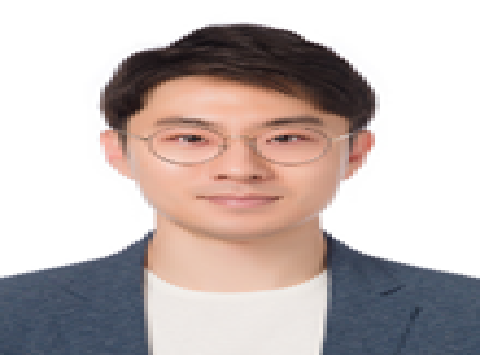
Seoung-Ki Lee
Functional Composite Materials Research Center, Korea Institute of Science and Technology, Korea
Dr. Seoung-Ki Lee received the Ph.D. degrees in School of Advanced Materials Science & Engineering from the Sungkyunkwan University, Republic of Korea in 2014, respectively. From 2014 to 2015, he was a post-doctoral researcher in School of Electrical and Electronic Engineering with Yonsei University. After his second post-doctoral researcher in Smalley-Curl Institute and the NanoCarbon Center at Rice University from 2015 to 2016, he is currently a senior researcher with the Functional Composite Materials Research Center, Korea Institute of Science and Technology since 2016. His current research interests include synthesis of low dimensional materials, flexible electronics, and wearable sensor system
Transition metal dichalcogenides (TMDs) have been one of the most promising materials for post-silicon electronics and have attracted broad attention from academia as well as industry. In particular, the heterostructures constructed from TMDs provide a wide range of basic building blocks with innovative electrical and optical, and mechanical properties, which was not observed from existing bulk materials. To date, although a large number of synthetic methods centered on the chemical vapor deposition (CVD) have been reported, these conventional approaches require imperative post-processing steps, i.e., transfer and patterning, degrading the overall uniformity of the film, which degrade the uniformity of the film as well as demand additional time/costs.
In this talk, the structure controllable synthesis of TMDs (e.g. MoS2, WS2) will be introduced by the solution-based partial thermolysis method. The novel approach provides specific control of the microstructure of MoS2 such as thickness, shape and interspacing, resulting in a well-aligned MoS2 pattern in the wafer scale. Especially, the instant laser-based local treatment enabled the generation of a micro-patterned MoS2 (n-type) and WSe2 (p-type) on a 4 in. wafer within several minutes under ambient conditions without damaging the substrate, dramatically reducing the processing time. As a proof of concept, we demonstrated the behavior of a MoS2-based field-effect transistor, a skin-attachable motion sensor, and a MoS2/WS2-based heterojunction diode, showing the applicability to practical applications